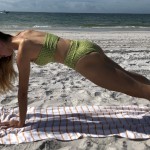December 11, 2019
Exploring Shoulder Differentiation
by Teri Lee Steele
As a student of movement, I always try to find ways to incorporate new ideas and information that I learn from Pilates into every other area of my life – from dancing in rehearsal to something as simple as walking up a flight of stairs. After completing my Pilates certification in 2000, I began infusing Pilates principles into my personal training sessions and most clients could feel even a basic “bent over row” in their core. However, as a teacher of dance, I noticed that most dancers, even if they were performing Pilates exercises well in class, were not applying those ideas into their dancing. It was then that I decided to create exercises that overtly demonstrated each core principle and how they progressed from a simple core principle movement into more complex exercises.
Today, I want to discuss the Pilates principle of shoulder differentiation. This core principle teaches us how to stabilize our upper body against arm movement patterns. When lifting the arms overhead, the abdominals engage to keep the ribcage downwardly connected to the pelvis in order to stabilize the spine and shoulders in a neutral position. Without shoulder differentiation, the shoulders shrug or the ribcage flares upwards (both of which place the individual in a precarious position especially as weight is added to the upward motion of the arms – either by using weights directly or in cases where the body’s position changes and the weight of the arm itself loads the motion).
It is important to teach shoulder differentiation when beginning a class or a client session so that they have a physical and mental understanding of how this is accomplished and why it is important. The hope is that the student will then impart this pattern into other more choreographically dense exercises as well as any movement patterns in their life and thus change faulty patterns into healthy ones.
Let’s discuss how one can teach shoulder differentiation simply and then progress by altering tempo, lever length and the body’s position relative to gravity. I like to keep in mind that gravity pulls weight downward as well as the fact that we can always lower more weight than we can lift. The easiest initial way to teach shoulder differentiation is for the client to be supine, with arms up towards the ceiling, shoulder-width apart and palms facing each other. Inhale to prepare and exhale to take the arms overhead towards the floor, rotating the palms to face the sky. As the arms move overhead, I watch to make sure that the ribcage stays downwardly connected towards the ribcage and the shoulders stay away from the ears. A skeletal cue would be to move the humeral head deep into the shoulder socket as the distal arm reaches up. I actively cue exhalation to engage the abdominals which keeps the ribcage connected to the pelvis against the weight of the arms reaching up. Although we are not “going for the burn” here with the abdominals, there should be abdominal engagement felt with every exhalation. This is the “easiest” variation because the weight of the arms are being lowered with gravity and allows the client to focus on the correct pattern as the arms are being moved towards the floor. It is important to ensure that they are not “dropping the arms” and letting gravity do all of the work. It much easier for the client to feel the correct pattern simply because they do not need to worry about lifting the weight of their arms. This variation is called “The Lat Stretch.”

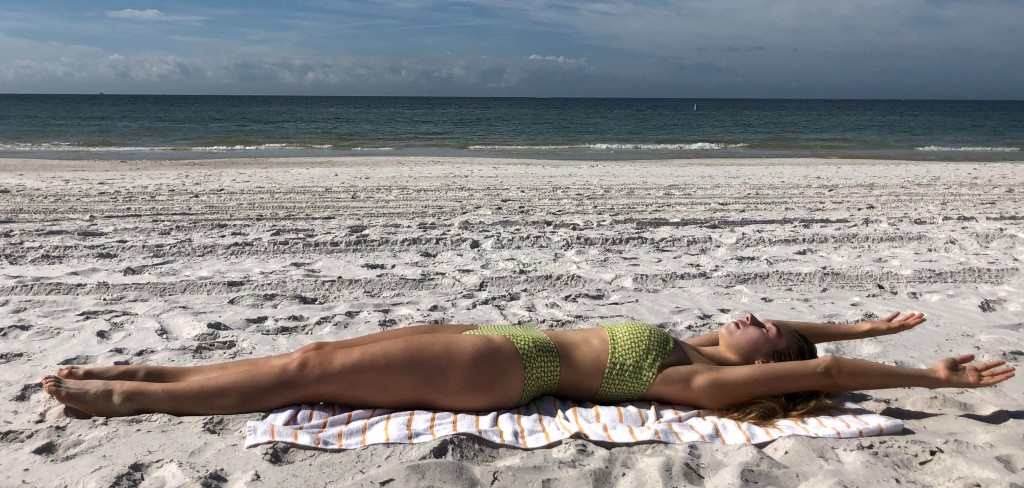
Once proper patterning is taught, we can progress the same movement pattern into an intermediate variation simply by changing their body position. The same cues and movements, when performed seated or standing, will feel much different and will also prove to be the most “functional” in terms of transferring proper patterning into “real life” movements. I have my client sit on a chair or on a stability ball for more of a challenge. Starting with arms either by their side or outstretched at shoulder height, inhale to prepare and exhale to lift the arms up overhead. Again, the palms begin facing each other and as they lift, they rotate to face forward. The ribs and shoulders stay down as a function of the abdominals actively engaging with each exhalation. Once this is achieved with perfect form, small weights (1 – 2 lbs. (.5 – 1 kg) in each hand or one weighted ball held in both hands) can be incorporated to add extra load. If standing, I add a balance component by having the client lift one leg off the floor or stand on a balance cushion. The challenge can also be increased by shifting from the sagittal plane to more three-dimensional movements and by going through arm circles.

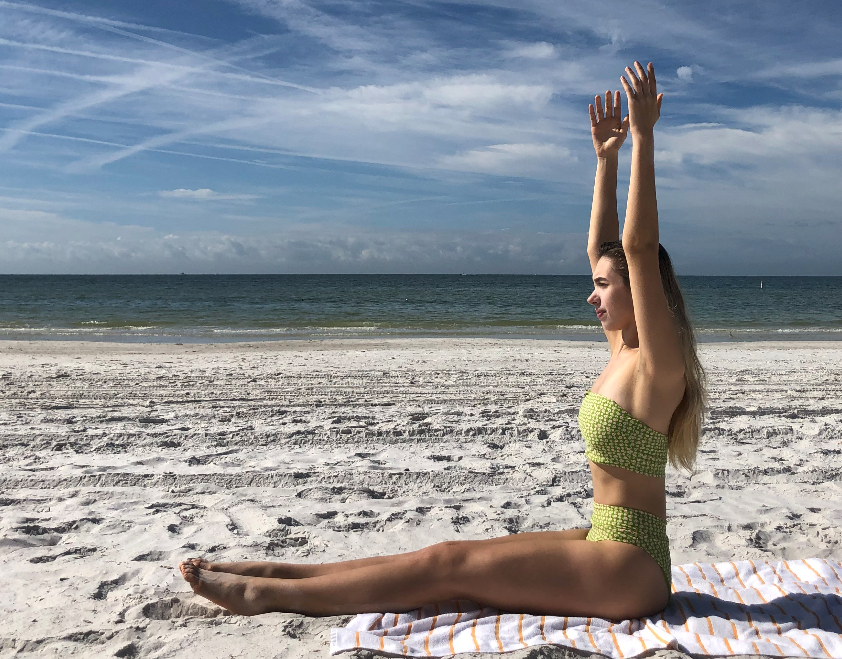
Performing shoulder differentiation in a prone position provides the most challenging variation. This is usually seen in preparation for swimming, but considering the extreme range of motion this requires of the shoulder joint, I start this sequencing in a quadruped position, allowing the client to sense the added effect that gravity places on the shoulder flexors and lower trapezius as the arm moves from a position perpendicular to the floor to parallel to the spine. It is important to cue the client to maintain weight in the arm that stays connected to the floor (instead of rocking back onto the knees) and keep the core box squared off to the floor as each shoulder flexes. This variation can also challenge balance as you add hip extension of the opposite leg to incorporate a cross-lateral pattern in the quadruped position.


Once that is perfected, I move my clients to a prone position on the floor with arms reaching overhead, neutral wrist and spine. It is important to note that in this position, quite a bit of shoulder flexion is present and any movement off the floor, especially if not concurrent with spinal extension, places the shoulders in an extreme range of motion. As the distal end of the arm lifts, the proximal humerus must drop deep into the shoulder socket, keeping the upper trapezius from engaging. Many other patterns can be incorporated here as well: arms stretched out into a T, lifting the externally rotated arms to engage the rear deltoids and open the chest or prone unilateral or bilateral arm circles, starting with the arms by the legs, abducting the arms overhead with or without spinal extension.
The most challenging of this particular progression would be shoulder flexion in a plank, either forearm plank or “regular” plank. I find it helpful to have clients place their feet wider apart to give more stability and limit the possibility of torso rotation as one arm lifts off the floor since less of their bodyweight is touching the floor. In a plank, lift one arm off (either overhead or to the side), keeping weight forward in the arm or forearm that stays on the mat, with the shoulder over the elbow or wrist. You can progress here as well with lifting the opposite leg off the floor, extending the hip until the leg is parallel to the floor. This variation is obviously not for everyone and is to be entered into with caution (and only after having accomplishing all of the previous variations with good form first).

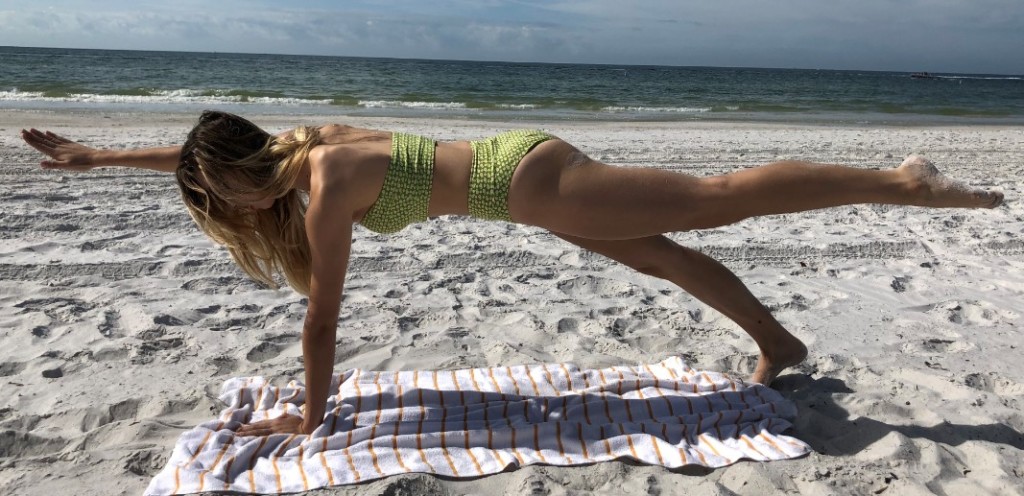
It is worth noting that I never do all of these in any particular session, but when you have clients or students who have progressed in their practice for many years, coming up with new ways of doing exercises is important. I truly believe it is part of my job to challenge my clients and keep them working differently to keep their bodies and minds engaged. They will complain during the session but will thank you afterwards!
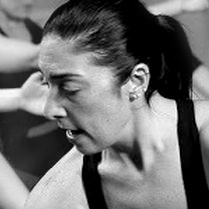 Teri Lee Steele graduated from the University of California at Berkeley with her B.A. in Physical Education with an emphasis on Exercise Physiology and Sports Medicine in 1990. That same year she received her Health and Fitness Instructor certification from the American College of Sports Medicine. Teri obtained her Pilates Mat Certification in 2000 and Pilates Apparatus Certification in 2001 from the Kelly Kane School of Core Integration. Teri currently works in New York City training her clientele privately as well as maintaining a faculty position at Steps on Broadway and Five Pillars Yoga as a Pilates Instructor and Educator.
Teri Lee Steele graduated from the University of California at Berkeley with her B.A. in Physical Education with an emphasis on Exercise Physiology and Sports Medicine in 1990. That same year she received her Health and Fitness Instructor certification from the American College of Sports Medicine. Teri obtained her Pilates Mat Certification in 2000 and Pilates Apparatus Certification in 2001 from the Kelly Kane School of Core Integration. Teri currently works in New York City training her clientele privately as well as maintaining a faculty position at Steps on Broadway and Five Pillars Yoga as a Pilates Instructor and Educator.
Teri created Steele Pilates in 2002, which uses the core movement principles of Pilates as well as an understanding of the physics of movement and the effects of gravity on the body to create a vast repertoire of exercises which consistently challenge her clients and students. She is extremely attentive to the correct form while seeking to increase muscular strength, endurance, and range of motion. Her classes are mentally and physically challenging and have been a favorite of the New York dance and fitness community for over 15 years. She is most known for her sequencing and variations as well as her ReForMatTM classes which re-imagine apparatus exercises in a mat format, using props to re-design the exercises into a format fit for the masses without risk of injury or losing control of quality. She created the Steele Pilates Mat Certification Program in 2005 and her Continuing Education Curriculum in 2006. In 2010, she created the first and only Steele Pilates International Visa Program in the USA, allowing International students the opportunity to come to NYC to obtain their Pilates education.
Teri’s classes are live in New York City, but can also be found online at teristeelepilates.com where she has over 20 classes as well as a Steele Pilates Membership

